In 2020, Marshall Krasser explained the work of the visual effects created by FuseFX on the Upload series. He went on to work on various projects including Them, Joe Pickett, Pachinko and Yellowjackets.
How did you and FuseFX get involved on this show?
The production side VFX Supervisor Bret Culp reached out to our co-founder Chief Development Officer Tim Jacobsen. Simultaneously, we were entering into an agreement with Netflix. We worked in partnership with all parties to help bring their vision to life.
How was the collaboration with Creator Mike Flanagan and Production VFX Supervisor Bret Culp?
95% of our collaboration was directly with the production VFX Supervisor, Bret Culp.
We did have a couple of meetings with Mike Flanagan and his team to work through the planning and postvis animatic creation for the building destruction and pendulum sequence in episode 7, “The Pit and the Pendulum.”
What were their expectations about the VFX?
High-end feature-level VFX work. They were very specific on making things look and feel as realistic as possible – the work needed to stay grounded in reality.
How did you organize the work with your VFX Producer?
Mark Mason was our primary Fuse VFX Producer – with a later producing assist from Courtney Gardiner. It was a definitely challenging show from a production planning stage. There were several highly skilled disciplines across the facilities that had to be organized and managed.
These were very complicated sequences that took a lot of pre-planning and organization to pull off.
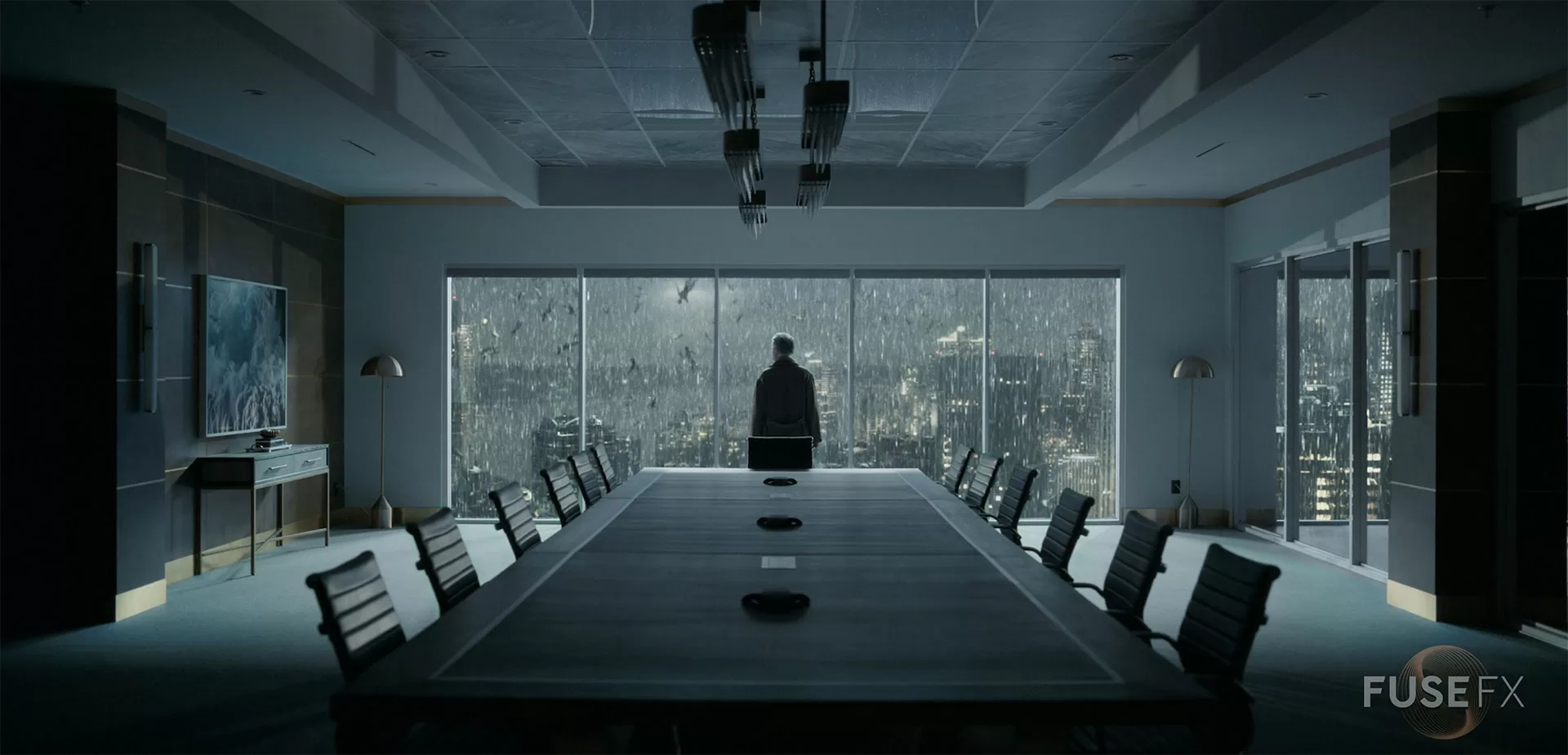
How did you split the work amongst the FuseFX offices?
The work was completed between our BC & LA offices, with the majority of the work created in BC. As mentioned above, we tried to split the work to best leverage the talent we had in specific locations. Rav Brar was the Vancouver CG Sup and provided the DFX Supervision for the entire show. For consistency, Derek Bird in our LA office was our overall Compositing Supervisor for BC and LA. Michael Capton was handling the CG/FX/Animation Supervision for the LA team.
What are the sequences made by FuseFX?
There were a few, in no specific order:
- The acid Shower, the building, and its later destruction
- Cat augmentation with a 3D animated cat when needed
- Exterior office window extensions [including the visual drop]
- The falling dead body rainstorm
- Misc. random shots as well – like, Dead Perry smoke and acid augmentation
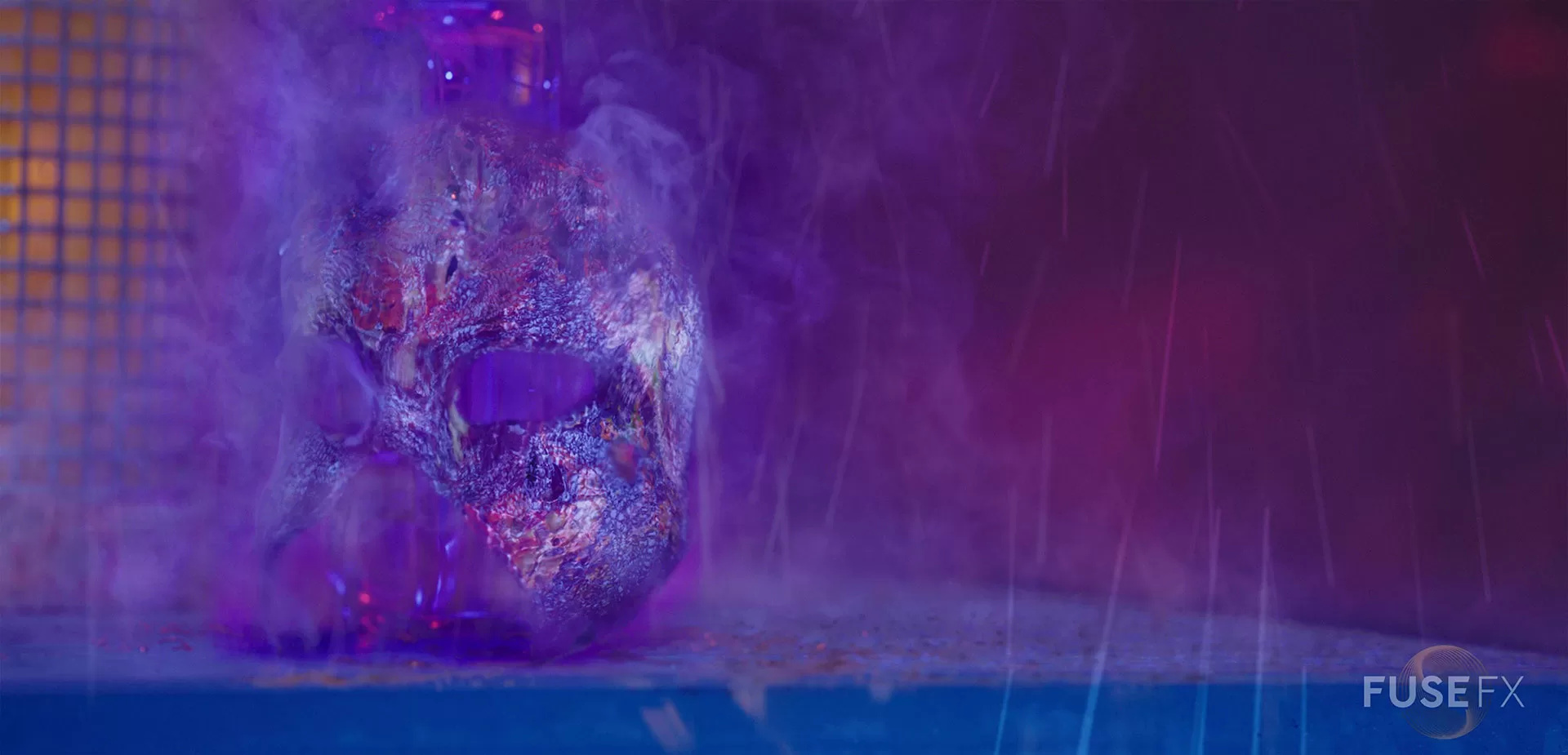
Can you elaborate about the design and creation of the acid shower?
We worked with Bret and the editorial department to figure out the progression and timings for the damage and acid smoke intensity. Once the key shots were picked and roughly bought off on, we then proceeded to fill in the blanks with the in-between shots.
What kind of references and influences did you received for this gory sequence?
Bret supplied us with some reference of acid being dropped on a raw chicken leg. We used that as the starting point and refined the look(s) as we progressed.
We also looked online for acid-burned bodies and other chemical burns on humans. I often hope that no one is monitoring the searches that VFX Supervisors have to do to get visual guidance . . . or we might get locked up . . . with the key thrown away for sure.
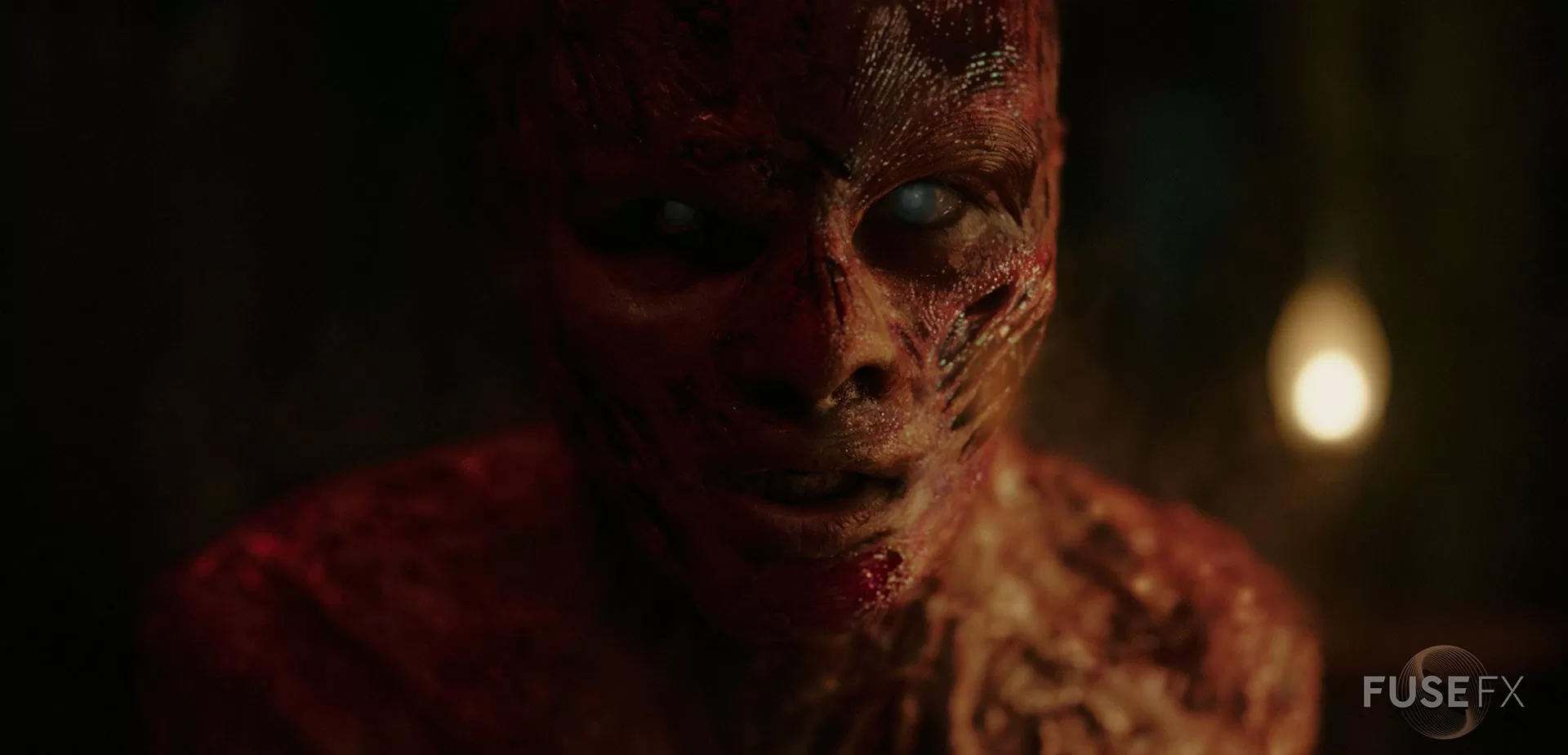
How did you enhance the makeup work?
It was a combination of colorization and adding a progression of created skin damage in 2D [with body tracks] for the first part of the sequence, then later full body tracks of the actors and applied 2D and 3D acid damage during the shower sequence.
In the later post-shower aftermath sequence in episode 3, our DMP department created aftermath wounds that were then tracked and integrated into the comp. Along with a more smoldering FX 3D smoke and interactive goo.
We also had to digitally “thin” certain characters since the practical makeup application did “beef” them up a little too much. Especially Perry – due to his body type, the added makeup prosthetics really altered his appearance.
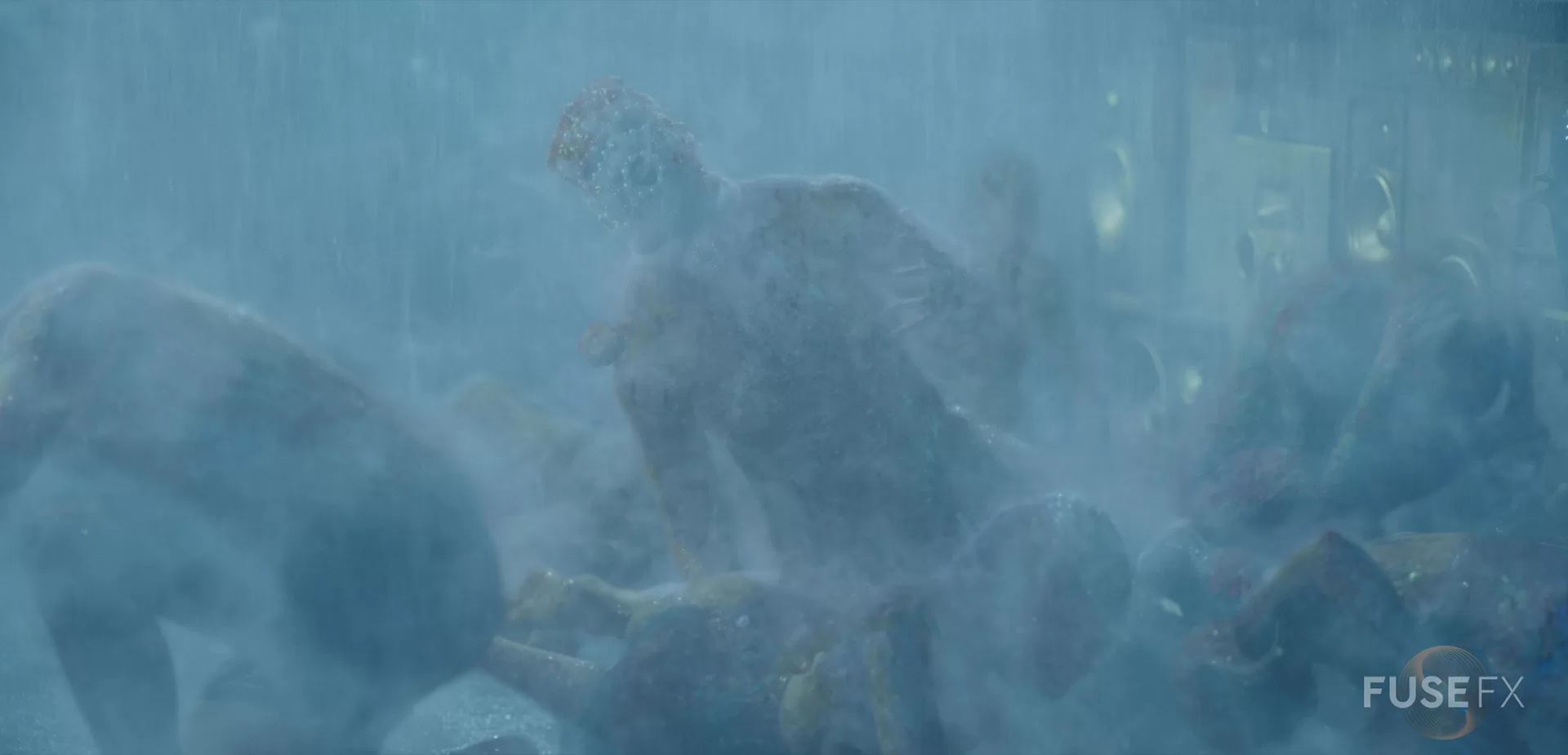
Can you tell us more about the FX elements creation and animations?
For the “Perry Party,” the FX smoke had a few different characteristics that were desired – in order to create the differences; we developed separate FX simulations and looks that were blended in the comp. We had “wispy” and “lacy” smoke – the key was not to have ghostly/magical smoke.
The full-body tracks we created were used as objects in the FX simulations to impart the correct smoke disturbance as they were writhing around in pain.
The FX aftermath acid smoke did have to evolve as the sequence(s) progressed – becoming more of a smoldering smoke that was backlit by lights in the composite when needed.
The diverse camera angles did provide challenges for readability and continuity –
since the base FX simulations would look different depending on the angles and would require tuning.
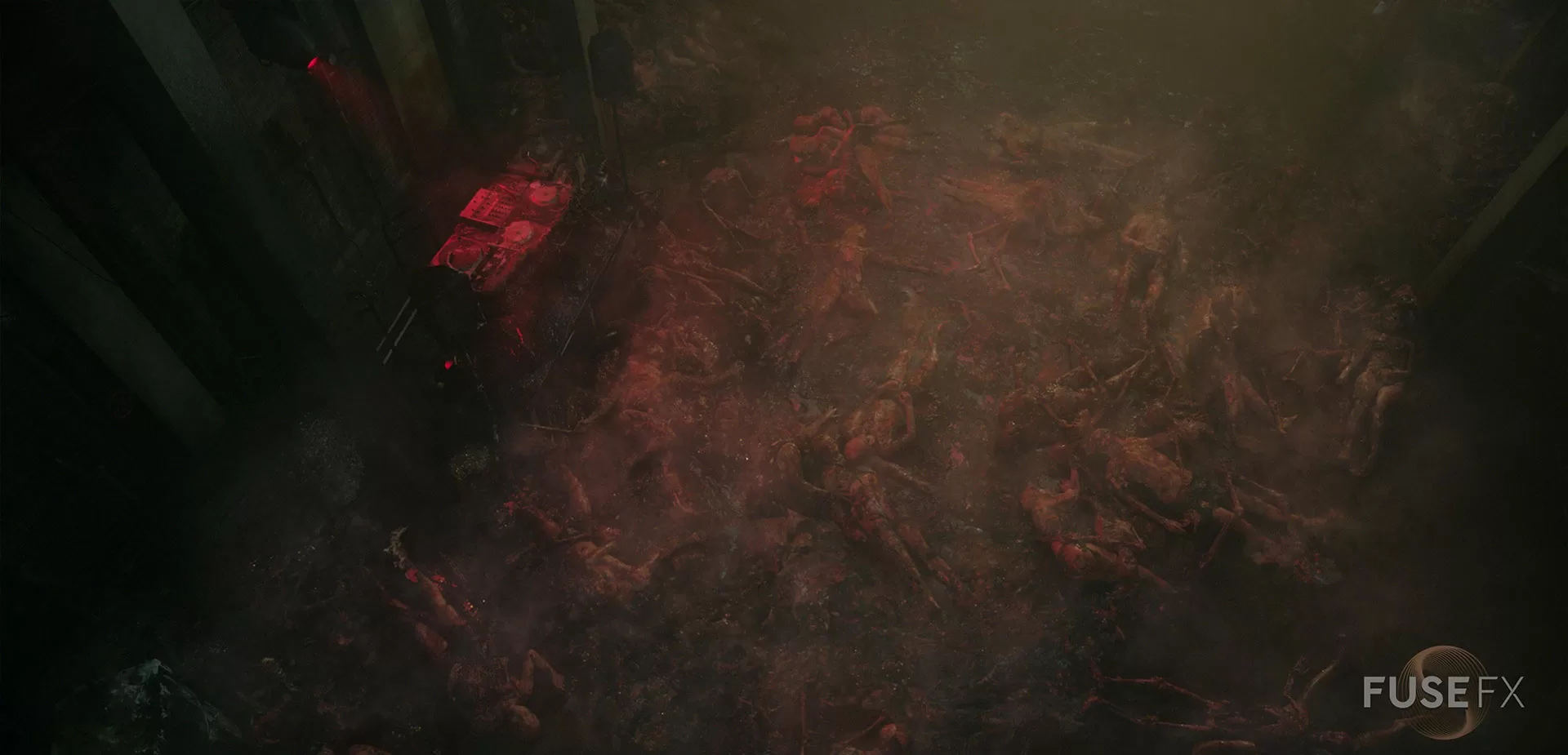
How did you recreate the factory building?
The Building actually did not exist – only a small piece was created on-set that included the entry door and a small amount of the surrounding brick façade.
Our DFX Supervisor, Rav Brar, spearheaded this 3D model build that you see in the day and night shots, keeping in mind what would be needed for the interior destruction sequences. The daytime shots were a little tricky to nail down since the plate photography was shot on a flat-lit overcast day – you needed detail, but not heavy-defined contrast.
For the interior building, the art department had a “blueprint” sketch-up for us to work with and base our build on. The interior was a partial set build that required us to match and extend when necessary.
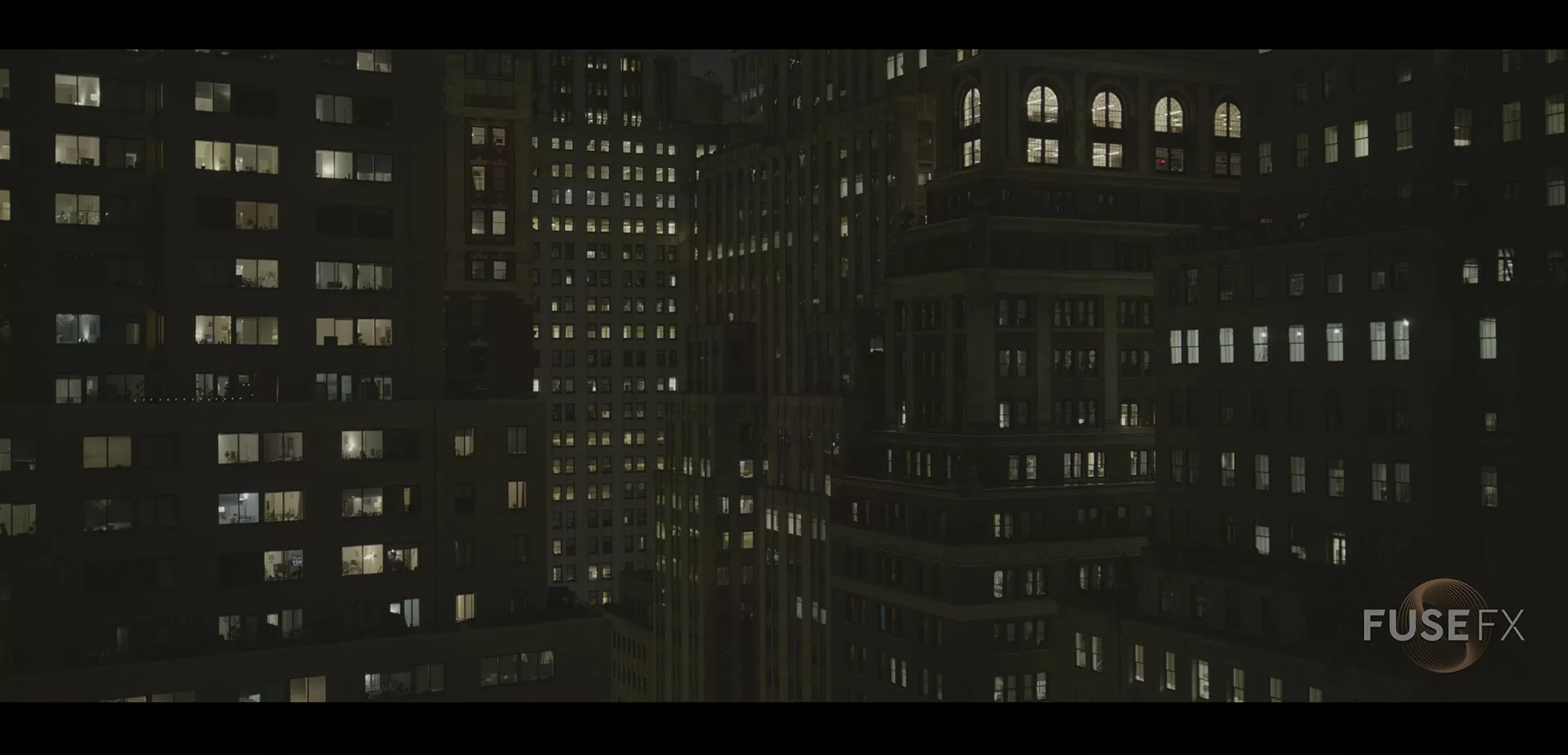
In VFX we love to destroy things, can you tell us more about that for the building?
This was by far the trickiest sequence to create. The editorial offline we were provided consisted of several black frames with text burn-ins that described the needed story point/action.
We did a very rough first pass on wrecking ball impacts and overall pendulum timings to start the process. After that guide was bought off, we proceeded to move into doing a postvis animatic to help better work out the beats.
As we moved into shot production and reviews, there were additional modifications and requests we needed to alter and adjust.
The big hurdle was keeping continuity from shot to shot. The ball would hit in one shot and then continue into the next. This required retaining the previous simulation data [positions of debris/dust etc.] and making sure it flowed seamlessly.
If the scene had been shot all in camera – there would have been multiple cameras in use that would have caught the flow of the destruction. So, in essence, that is what we had to mimic and account for.
What did become even trickier was when there was an action change in a shot – that then had to be percolated down the chain into the following shots FX sim.
The balance was to have enough buildings to be falling, yet keep enough of the building to last through the sequence. There were a few “cheats,” but overall, we stayed true to real-life physics and the building volume.
Most of these shots only retained the actual actors – with the rest of the shot being made up of the 3D building render, volumetric lighting and FX sims – with a few 2D practical particulate and dust elements mixed in when we could.
The pendulum was its own little beast to tame. We needed to figure out a way to have it break loose from the main building structure, then start to fall and catch on cables that would then set into its deadly swinging motion while still having the building collapse around it.
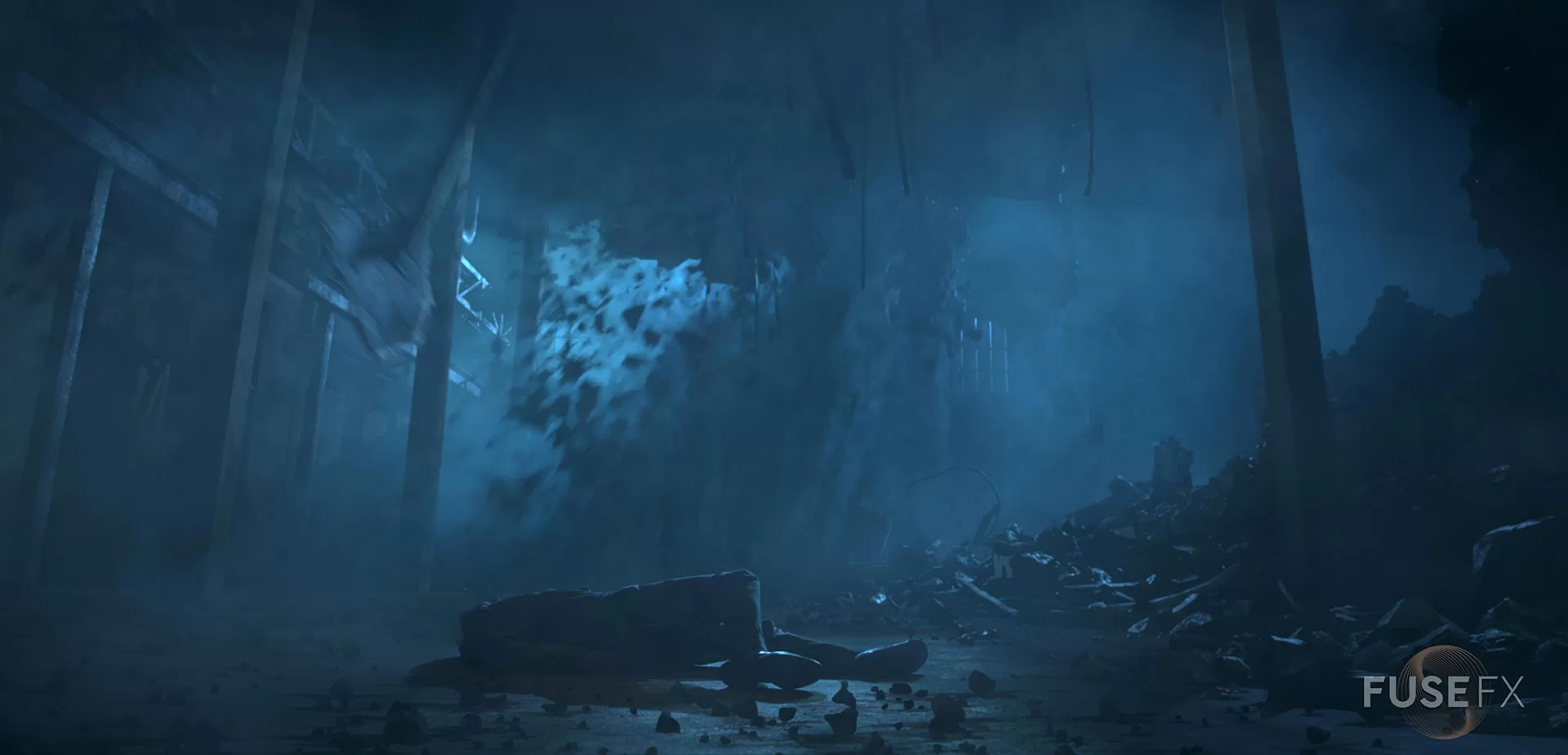
Can you elaborate about your FX destruction simulation tool?
Rav gave the following explanation; “Knowing the scope of the destruction required and timeline before the final, I had already surmised our tools were insufficient to get the work done and keep continuity through the entire sequence and to keep up with notes from our clients.
I worked with the FX Department, and we immediately started working on a new sub-pipeline for this sequence within Houdini, which allowed us to allow multiple FX artists to work simultaneously while automatically receiving updates from their peers, allowing for easier collisions to be added and the ability to add secondary FX elements.
This allowed Marshall to give all creative notes required to hit the client’s requests while not hindering our target delivery dates.”
Which shot or sequence was the most challenging?
Three of the sequences had very difficult challenges to solve. The Acid Shower, Building/Pendulum and the Falling Bodies. But would have to say the most challenging one would be the Building/Pendulum sequence. And single shot would be the tilt down in the falling bodies sequence.
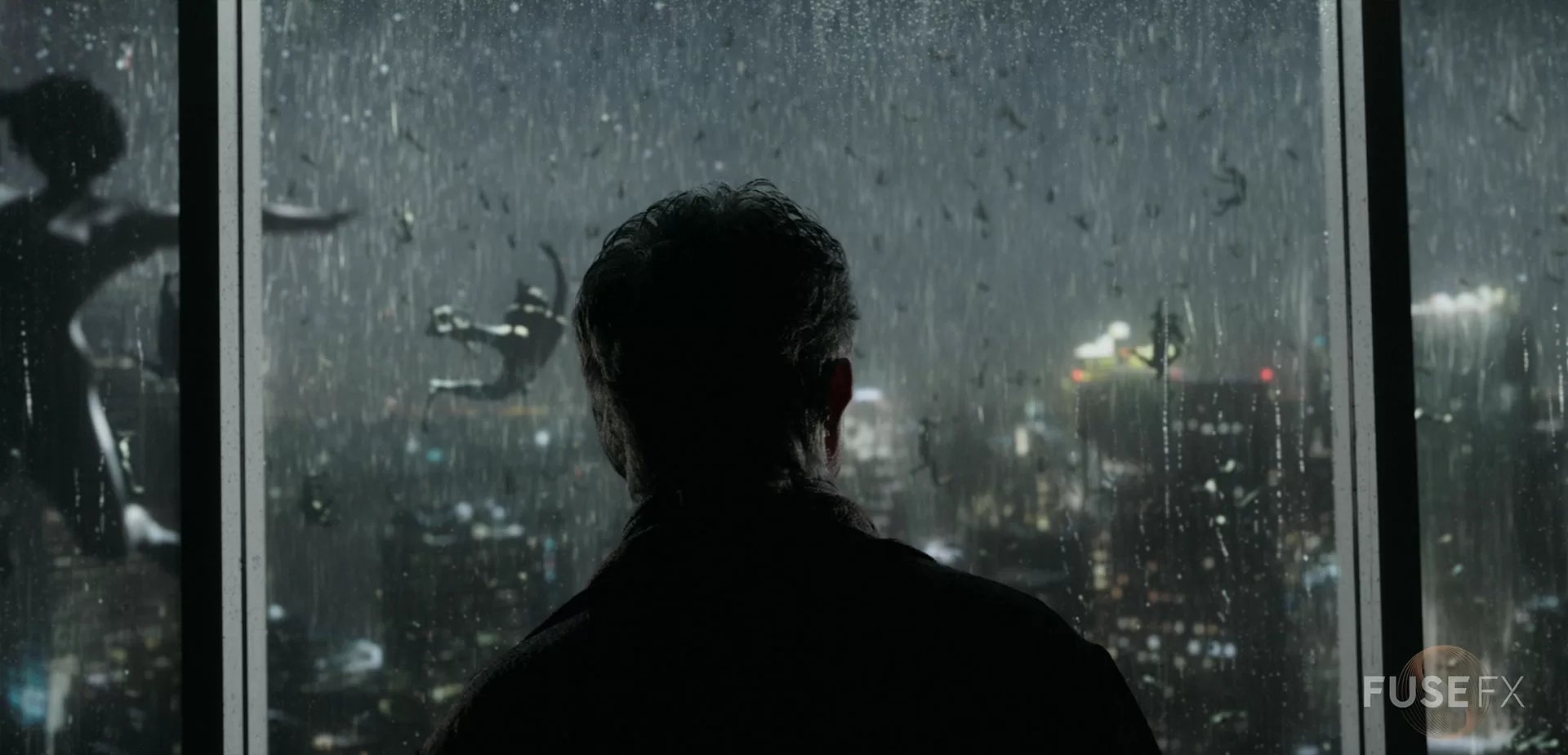
Is there something specific that gives you some really short nights?
Everything did . . . but we did have “short nights” due to the hours required for buttoning up the work for final delivery – especially the building collapse.
After one solution was found on a sequence, another 3 would be waiting, so it was an ongoing process.
What is your favorite shot or sequence?
There are a few that really stand out.
The falling bodies had enormous hurdles to solve, and was very pleased where it ended [up falling].
The building/pendulum sequence was another one that we felt worked great [and didn’t implode on us].
The cat shots I felt, had a very realistic and polished look to them.
And, of course, some great shots in the Perry Party and aftermath sequences.
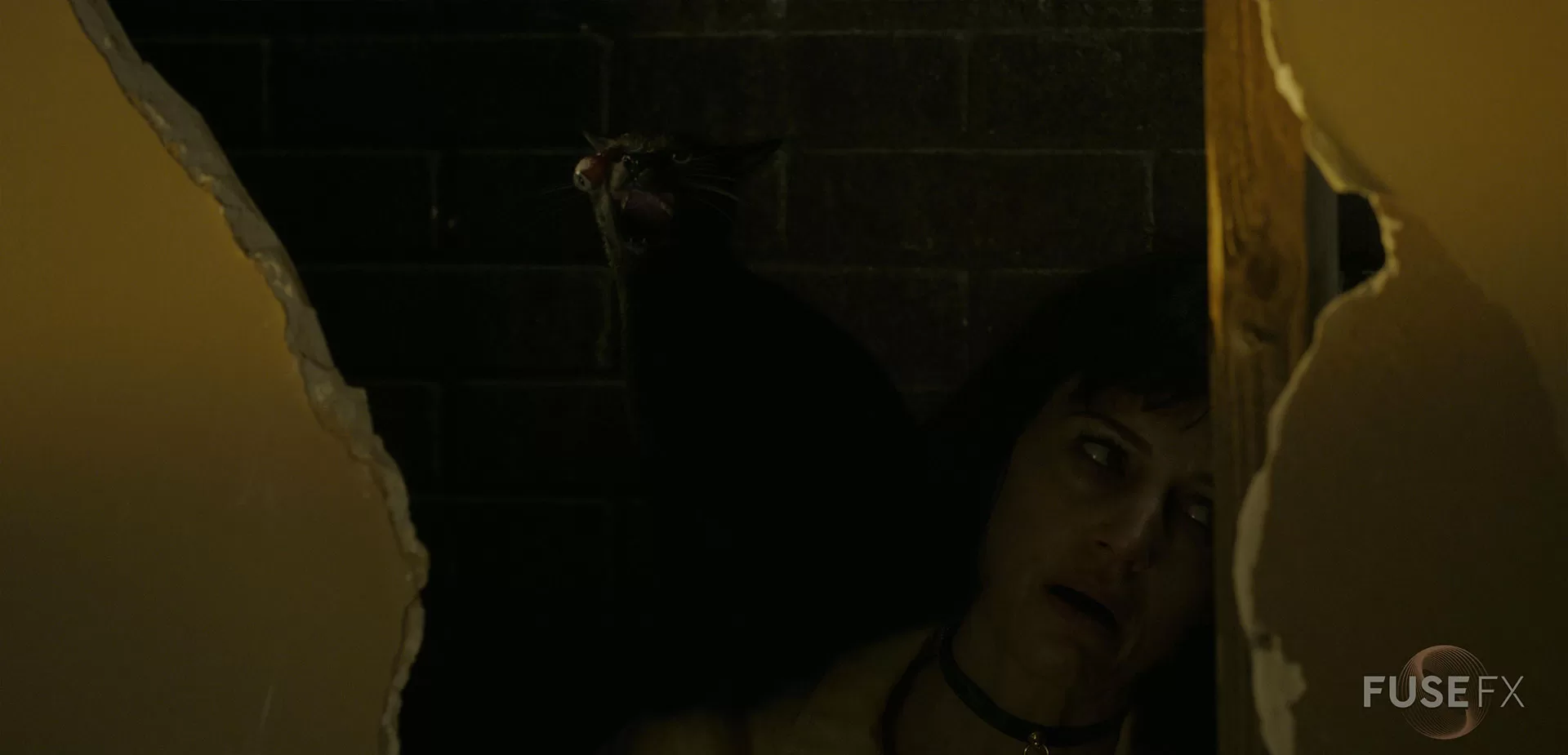
What is your best memory on this show?
Working with a killer FuseFX team. They really gave 110% to hit the creative needs we were tasked to tackle. I was really proud of the work they brought to life and created from top to bottom. We had an awesome Production staff that Marc and Courtney guided that included our indispensable VFX Coordinator, Gilles Jacob – no weak link on the team.
Towards the end of the show, the assistance we got from Jon Cowley [our head of studio] and Jamie Barty [VFX Supervisor] helped us over the final hump.
At the end of the day, the best memory would be of the talented people on our team.
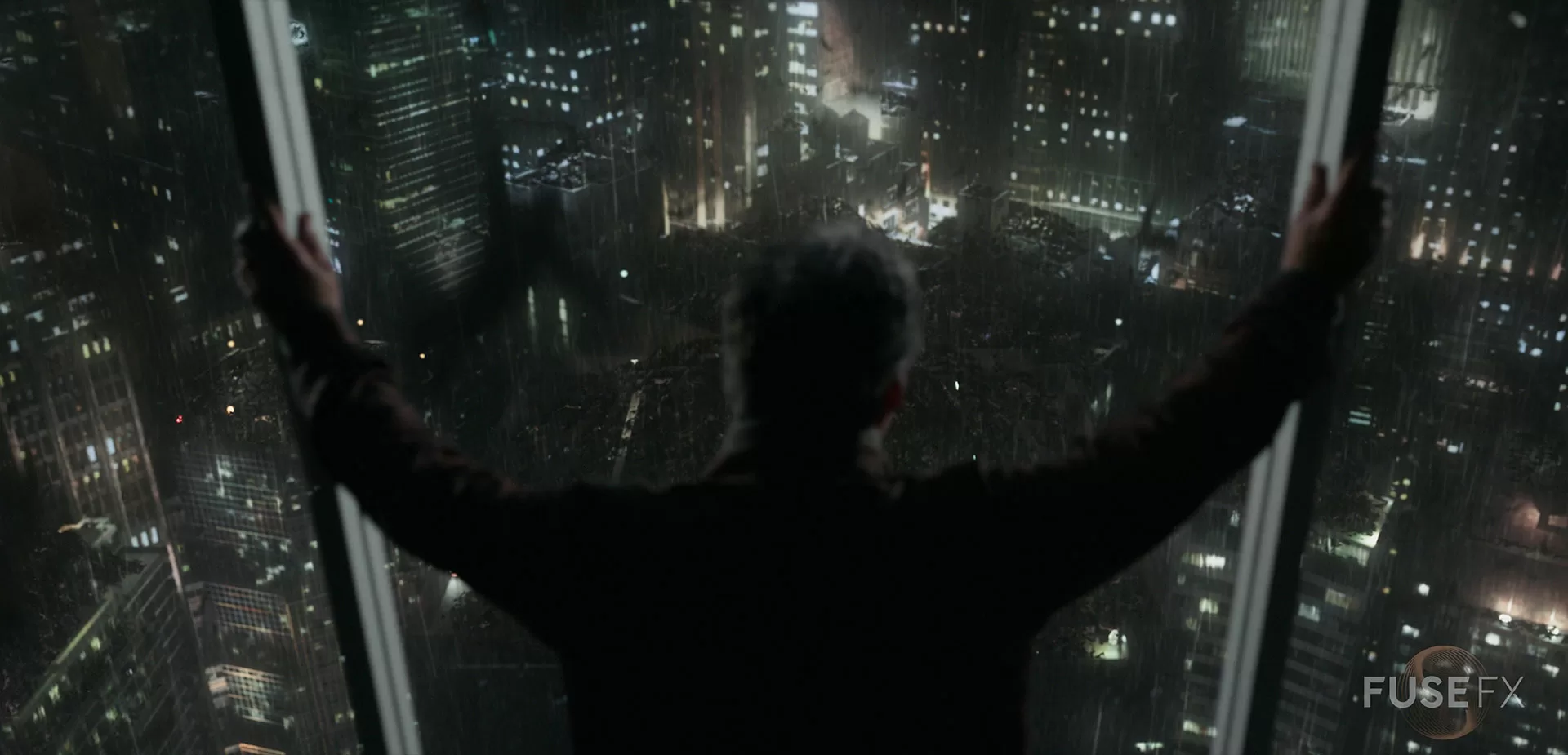
How long have you worked on this show?
From a calendar standpoint, the script to final delivery was about 15 months overall.
What’s the VFX shots count?
FuseFX contributed over 200 shots across multiple episodes. These were a combination of 2D, 3D, DMP, FX simulations and animation.
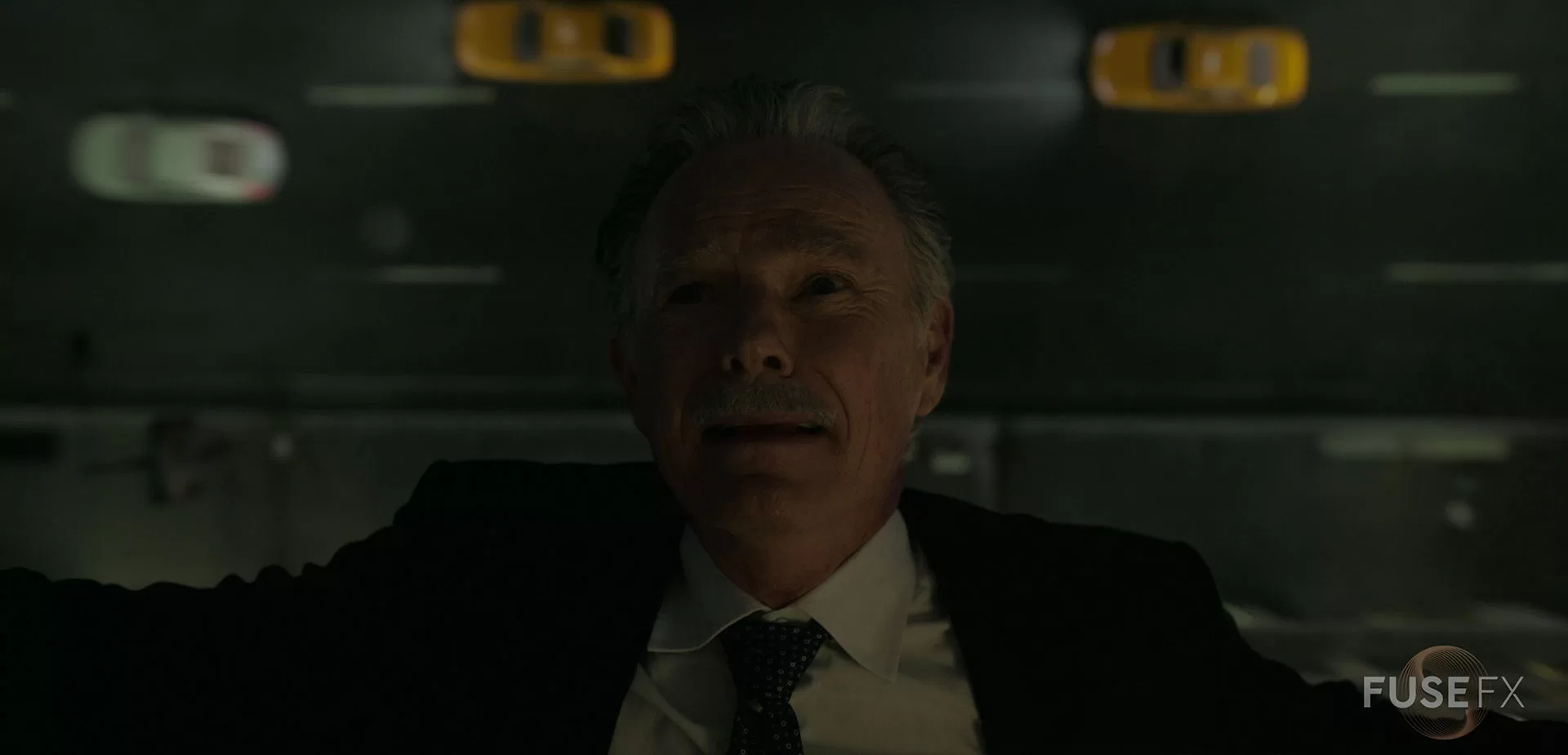
What was the size of your team?
We were just over 100 people across all of the brands & locations that contributed to the project.
What is your next project?
As with most VFX individuals – all of us are in limbo due to the 2023 strikes in Hollywood. So hard to know what will be the first out of the gate for myself.
A big thanks for your time.
© Vincent Frei – The Art of VFX – 2023






